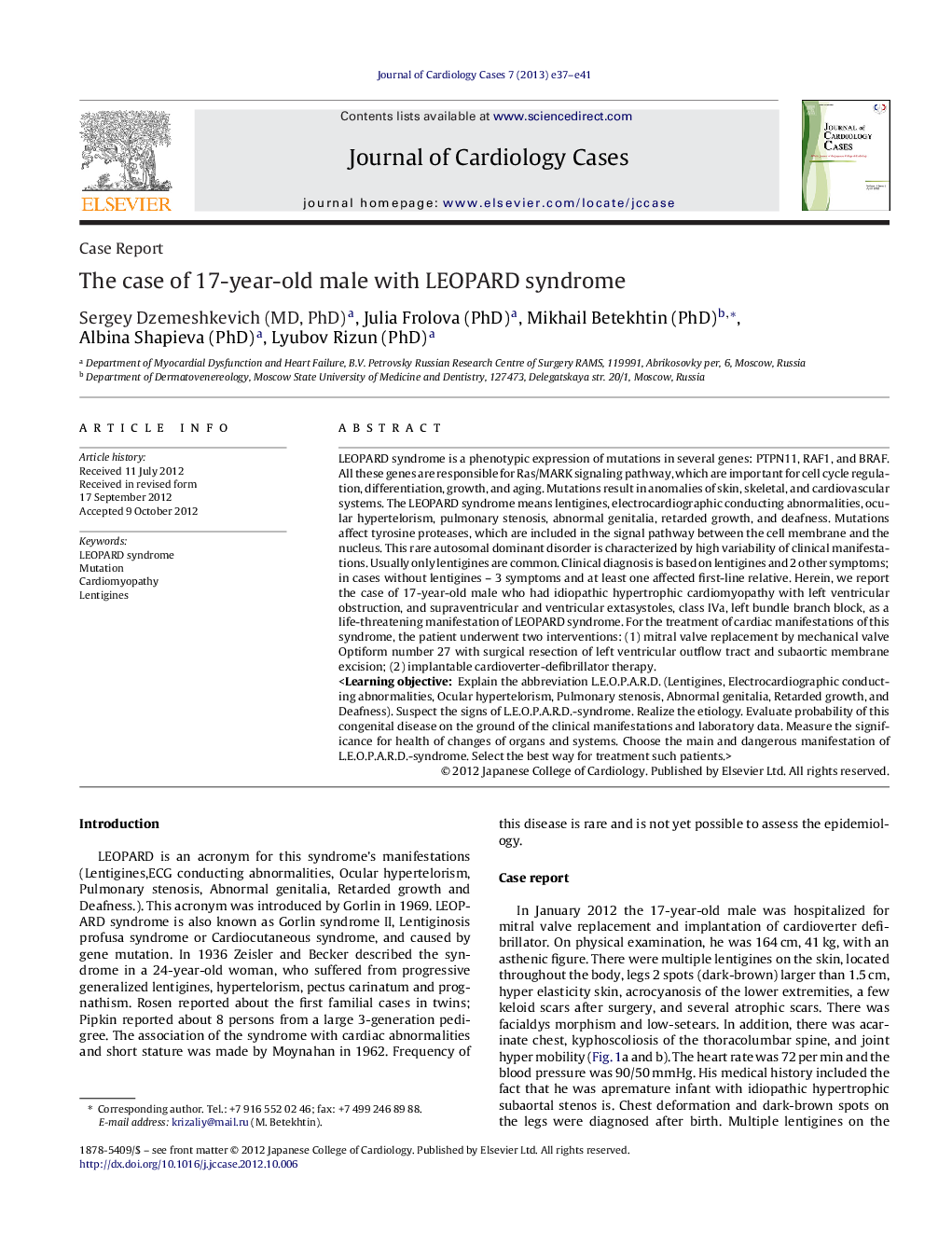| Article ID | Journal | Published Year | Pages | File Type |
|---|---|---|---|---|
| 2963921 | Journal of Cardiology Cases | 2013 | 5 Pages |
LEOPARD syndrome is a phenotypic expression of mutations in several genes: PTPN11, RAF1, and BRAF. All these genes are responsible for Ras/MARK signaling pathway, which are important for cell cycle regulation, differentiation, growth, and aging. Mutations result in anomalies of skin, skeletal, and cardiovascular systems. The LEOPARD syndrome means lentigines, electrocardiographic conducting abnormalities, ocular hypertelorism, pulmonary stenosis, abnormal genitalia, retarded growth, and deafness. Mutations affect tyrosine proteases, which are included in the signal pathway between the cell membrane and the nucleus. This rare autosomal dominant disorder is characterized by high variability of clinical manifestations. Usually only lentigines are common. Clinical diagnosis is based on lentigines and 2 other symptoms; in cases without lentigines – 3 symptoms and at least one affected first-line relative. Herein, we report the case of 17-year-old male who had idiopathic hypertrophic cardiomyopathy with left ventricular obstruction, and supraventricular and ventricular extasystoles, class IVa, left bundle branch block, as a life-threatening manifestation of LEOPARD syndrome. For the treatment of cardiac manifestations of this syndrome, the patient underwent two interventions: (1) mitral valve replacement by mechanical valve Optiform number 27 with surgical resection of left ventricular outflow tract and subaortic membrane excision; (2) implantable cardioverter-defibrillator therapy.
